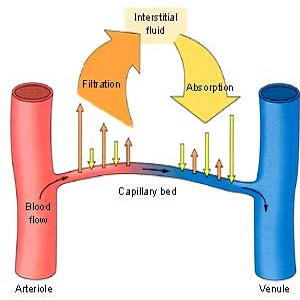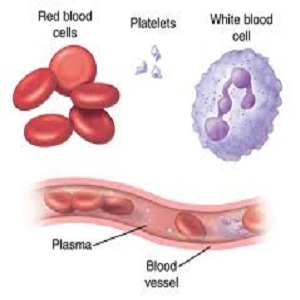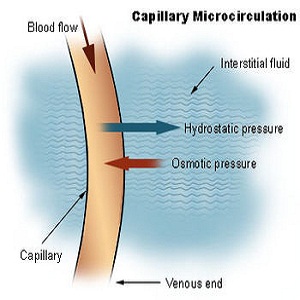Difference between Plasma and Interstitial Fluid

The human body is home to an intricate system of transport for fluids which are required to sustain different functions. Plasma and interstitial fluid are two essential body fluids. There are a lot of similarities in their composition and mode of operation, which means they are easily confused with each other. However, differentiating between these two is important for a thorough understanding of bodily processes.
Plasma is a major component of the blood. Blood plasma contains both red blood cells and white blood cells. It also carries hormones and platelets, and is rich in plasma proteins. However, interstitial fluid contains no red blood cells and has very few white blood cells. There are also no hormones and platelets in interstitial fluid.
Interstitial fluid is formed when plasma passes through capillaries due to hydrostatic pressure. However, since plasma platelets are too large in size to pass through the capillary walls, the resulting fluid is filtered and does not contain any red blood cells and platelets. Thus, the difference in composition is that interstitial fluid is blood plasma without the protein platelets. However, white blood cells are present in order to combat any infections.
There is a constant exchange process going on between plasma and interstitial fluid. Interstitial fluid bathes the cells while plasma flows inside them. This fluid surrounds the cells and provides the medium for intercellular exchange.
Instructions
-
1
Plasma:
Plasma is a major component of blood. It is the liquid component which holds the blood cells in suspension and is composed of a mixture of water, sugar, fat, protein, and salts. It makes up around 55% of the total blood volume. Plasma holds white blood cells, red blood cells, hormones, fibrinogen, globulins, human serum albumin, and many other essentials needed for bodily functions.
Image courtesy: yalemedicalgroup.org
-
2
Interstitial fluid:
Interstitial fluid is found in the spaces between the cells. Its main function is to transport nutrients from the blood to the cells and then remove the waste materials from them and return to the blood. Therefore, it is the medium of exchange between the blood and the cells. In essence, this fluid is plasma without blood proteins. It works with the process of hydrostatic pressure where the fluid is pushed out of capillaries into the intercellular spaces due to high pressure. This fluid, known as the interstitial fluid, contains the nutrients and oxygen required by the cells.
Image courtesy: en.wikipedia.org







